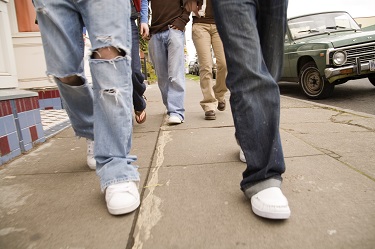Prevention and early intervention are key elements in reducing the number of teens that use drugs. In order to identify and target teens for education and intervention, however, it is important to understand what factors make a teen likely to use.
There are differences, too, in various subgroups of the population that can influence which factors make drug use likely. Urban teens have different risk factors than rural teens, for instance, and black teens are likely to use drugs for different reasons than white teens.
Understanding Trends Are Critical
 It is critical to understand the trends that affect teens and that might impact whether they initiate drug use. Often, those teens that experiment with drugs go on to develop a drug addiction by the time they reach early adulthood. The transition to early adulthood is characterized with decisions that can impact career choice and even marriage and family, so it is critical that drug use be reduced in this population.
It is critical to understand the trends that affect teens and that might impact whether they initiate drug use. Often, those teens that experiment with drugs go on to develop a drug addiction by the time they reach early adulthood. The transition to early adulthood is characterized with decisions that can impact career choice and even marriage and family, so it is critical that drug use be reduced in this population.
Among Hispanic teens, experts have observed that the process in which an immigrant teen has adapted to his or her host country’s culture, or acculturation, is a predictor of drug use. However, while studies have shown a correlation between acculturation and drug use, the nature of the connection is not fully understood. A new study has shown the pathways that connect acculturation with teen drug use among Hispanics.
The researchers enrolled 1,040 Hispanic students from high schools in California. The students were recruited through a substance use prevention effort being used in the school.
Linguistic Connection
The researchers administered questionnaires at the beginning of the study, and then again at a one-year follow-up period. Included in the questionnaires were measures of several different factors. The students were asked about their linguistic acculturation, with questions that sought to establish, for instance, the primary language used by the student.
The students were also asked about their social self-control, with questions such as whether a student encountered difficulties in controlling what they said. They also asked students which drugs their close friends had used during the past thirty days.
In addition, the researchers asked the participants about their own substance use, including cigarettes, alcohol, marijuana and other drugs, both at baseline and at the follow-up period.
The researchers identified 846 of the participants as Hispanic based on their self-identification, and asked them to complete a follow-up questionnaire. Of those who completed the initial surveys, the retention rate was 81 percent.
The researchers were able to test a model that could predict a student’s current substance use based on earlier acculturation measures reported at baseline. The model focused on measures of social self-control, peer substance use and personal substance use. This was examined in light of the connection at follow-up between acculturation and substance use.
The researchers discovered that there are two main pathways from linguistic acculturation to the substance use patterns at the one year follow-up.
When students reported a higher level of linguistic acculturation at baseline, they were also more likely to have a lower level of social self-control. This was connected with a higher level of peer substance use, which was also associated with more substance use at the follow-up point.
Pathway to Substance Abuse
In a more direct route to substance use, those who reported a higher level of linguistic acculturation at the beginning of the study also reported more substance use at the follow-up, but this was through increased peer substance use alone.
The results of the study are potentially limited in several aspects. The questionnaires relied on self-reporting, which can result in inaccuracies due to the participant wanting to project a certain image. Also, while the researchers focused on linguistic acculturation, other measurements of acculturation could lead to significant variations in results.
The findings reflect a pathway to substance abuse that highlights a connection between linguistic acculturation and low social self-control and peer substance use. The findings may be helpful in helping target Hispanic teens that are likely to begin using substances based on a pathway of linguistic acculturation combined with low social self-control and peer substance use.


